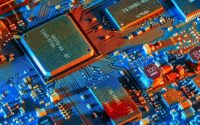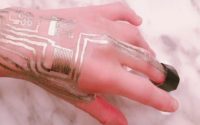Product Review: BD Intevi Two-Step Autoinjector
The single-use mechanical disposable devices have been formulated upon the need to allow ease of usability, convenience, and safe administration of injectables outside clinical settings, either by patients or their caregivers. Looking towards the future, these needs will continue to play an essential role in the development and selection of medical devices. From a commercial perspective, the approach creates an opportunity for MedTech companies to enhance patient engagement for disease management in a cost-effective and sustainable way. Becton, Dickinson, and Company (BD), a global market leader in medical technology has recently launched a BD Intevi two-step disposable autoinjector, designed to inject a variety of drugs effectively and safely outside hospital settings. The autoinjector enables the administration of biological fluids of different viscosities up to 35cP and different fill volumes up to 2.5mL without customizing the system components.
The new generation BD autoinjector, BD Intevi enables drug manufacturers to seamlessly enhance drug delivery experience and enhance cost efficiency. Supported with a user-friendly design and control point feature, BD Intevi enables two-step push-on-skin activation that promotes patient ease of use when self-injecting. Also, the device is equipped with feedback indicators to let the patients know about the correct dosage delivered and triggers audible clicks at the same time. The drug-device combination allows probing the target site without getting activated, enabling patients to test the site and choose the location.
BD emphasizes human factor engineering as human factor considerations are playing an ever-increasing role to produce innovative drug delivery systems. The patient-centric design approach of autoinjector meets the needs of customers and their patients, enabling them to live their life without being restricted by their drug delivery regimen.
With the increasing trend for viscous biological drugs for the treatment of chronic diseases, BD Intevi autoinjector serves as a highly performant and robust drug delivery solution to improve patient adherence to treatment and outcomes. The pharmaceutical companies are increasing their drug concentration, which can lead to an exponential increase in viscosity. For administration of these viscous drugs within acceptable injection time, autoinjectors work the best without compromising on patient injection experience. Unlike traditional large-volume auto-injectors that push design constraints to manage competing requirements, BD deployed a quality by design approach in BD Intevi auto-injectors that balances performance, robustness, and usability.
Designing a large-volume autoinjector of 2 mL poses more challenging design constraints compared to a 1-mL autoinjector. Injecting 2mL of viscous drug within the same time constraint without compromising injection comfort requires a high-force injection spring, which could also be considered as the “device engine” due to its specific integration design. The three main design parameters for a large volume autoinjector include injecting 2 mL of viscous drug safely and reliably within 10-15 seconds, protecting the efficacy of the drug until the time of injection, and optimizing useability to increase patient comfort and treatment adherence. The BD Intevi 2.25mL autoinjector is designed to provide a higher degree of flexibility for pharmaceutical companies by providing a drug delivery platform that can accommodate multiple potential injection configurations.
BD systematically conducts Monte-Carlo simulation to predict reliably with 95% confidence level injection time within the upper time limit. Leveraging a unique combination of expertise in device development, syringe development, and manufacturing, BD’s Intevi autoinjector allows the optimization of the system architecture, with pragmatic trade-off when required to enhance performance and robustness. Setting a predictable delivery time is essential for avoiding perceptible variabilities that could trigger unexpected behaviour.
For BD Intevi 2.25-mL autoinjector, all the subsequent steps have been strictly decoupled by design to ensure 100% Rigid Needle Shield (RNS) removal. It enables cap pull-off for the proper integration of the syringe while minimizing the force required both for the syringe assembly and force deployed by the patients. The optimization of the function and associated components minimizes the maximum force for each sequence and decouples all the sequences to avoid any cumulative effect.
Detailed Competition Analysis of BD Intevi autoinjector
· Safety Features
While creating injection devices for self-administration, the design must deliver the correct dose to the patient with minimal discomfort to improve compliance. Bespak’s VapourSoft powered SYRINA range of fully automated injectable devices has additional safety features such as automatic needle insertion and retraction to make the process simpler for some patient groups and reduce injuries. Gerresheimer also offers syringes with an integrated safety system to avoid needlestick injuries using standard rigid needle shield and fluoropolymer-coated plunger stoppers. BD Intevi autoinjector does not have any safety features but its user-friendly design ensures safe administration of injectables.
· Customization
Bespak’s injectable devices are highly customizable and allow collaboration with customers to address preferences for style and meet patient needs. The ergonomic designs accommodate the needs of specific patient groups as well as the sleek design makes it distinguished from its competitors.
· High-Volume Drug Delivery
SHL’s Bertha is a two-step autoinjector that features Rotaject technology, which supports highly viscous liquids with high viscosities of up to several hundred centipoises. The technology ensures the safety and comfort of patients throughout the injection process when delivering high-viscosity formulations. Nemera’s Sefina allows optimal delivery of fluid and viscous formulations at the right depth in subcutaneous and intramuscular injections. The force and speed of injections can be managed to fit formulation and patient needs by adjusting design through its patented cam-driven mechanism. Sensile Medical AG proprietary two-part rotary piston pump is flexible in volume and material, which can deliver up to 3mL from a standard cartridge whereas SensePatch Large Volume can pump up to 20 mL from external container to internal reservoir.
· Connectivity
Connected solutions facilitate self-administration by guiding the patient with audio or video signals and provide them with feedback and monitoring solutions. Biocorp’s Datapen is a reusable electromechanical pen injector that automatically records each dose injected and sends information in real-time to an app platform, or mobile platform with the help of a smart sensor, Easylog. The sensor converts a regular pen injector into a connected device and automatically collects each dose injected with 100% accuracy. Haselmeier’s D-Flex Pen is a disposable pen for bridging the gap between fixed and variable-dose pens, which can be freely selected while designing the pen. The D-Flex pen is an ideal and flexible drug-delivery platform that can be flexibly configured to suit the desired dose values from the first clinical study to series production. However, the product is currently under clinical trials.
· Needle-free Drug Delivery
Portal Instruments has developed a next-gen needle-free drug delivery technology for the administration of injectables, targeting the subcutaneous delivery of biologics with less discomfort. The technology enables the administration of 1mL injection via a jet, which is the size of a hair strand in less than half a second. The portal drug delivery platform is cloud-connected and provides real-time tracking of injection to improve adherence and communication. The risk of needle injury is zero since there is no needle involved and the technology is agnostic to drug concentration and viscosity.
Conclusion
In a rapidly growing market, auto-injectors have become a new standard for injectable drug-delivery systems due to their simplicity, reliability, and ability to be self-administered. With advances in technology, device makers have been expanding the realm of possibility, specifically through the new devices that can incorporate user feedback and communicate with patients. Minimizing discomfort, ensuring dose accuracy, simplifying the injection process, and overcoming the fears and stigmas, BD Intevi autoinjector technology makes a comprehensive solution for self-administration of doses. Maintaining a global footprint across multiple geographies, BD’s breadth of capabilities cements its position as the market leader in self-injection systems. However, the device needs to overcome limitations such as enabling connectivity, increasing vaccine volume, facilitating needle-free delivery, and incorporating more safety features for enhanced patient experience. Electronic autoinjectors are also available in the market but their uptake is limited due to issues around size, complexity, and cost when compared with disposable devices. There are opportunities to make improvements in some areas such as providing better feedback, reducing the force to actuate the device and keep it in contact with the skin during injection.
According to TechSci research report on “Global Autoinjectors Market By Therapy (Rheumatoid Arthritis, Multiple Sclerosis, Diabetes, Anaphylaxis, Others) By Design (Standardized v/s Customized) By Product (Prefilled v/s Fillable) By Technology (Automated v/s Manual) By Type (Disposable v/s Reusable) By Route of Administration (Intravenous v/s Subcutaneous) By End User (Hospitals & Clinics, Ambulatory Care Settings, Home Care Settings) By Region, Competition Forecast & Opportunities, 2026”, the global autoinjector market is expected to register a significant growth, owing to rising cases of anaphylaxis and increasing number of regulatory approvals for the device.
According to another TechSci research report on “Global Syringe Pump Market By Type (Infusion Pump v/s Withdrawal Pump), By Application (ICU, Cardiac Surgery Units, Pediatric Units, Operating Theaters, Others), By End User (Hospitals & Clinics, Ambulatory Care Settings, Others), By Region, Forecast & Opportunities, 2026”, the global syringe pump market is expected to grow at a CAGR of 7.21%, owing to factors such as growing geriatric population and increasing number of surgical procedures.



